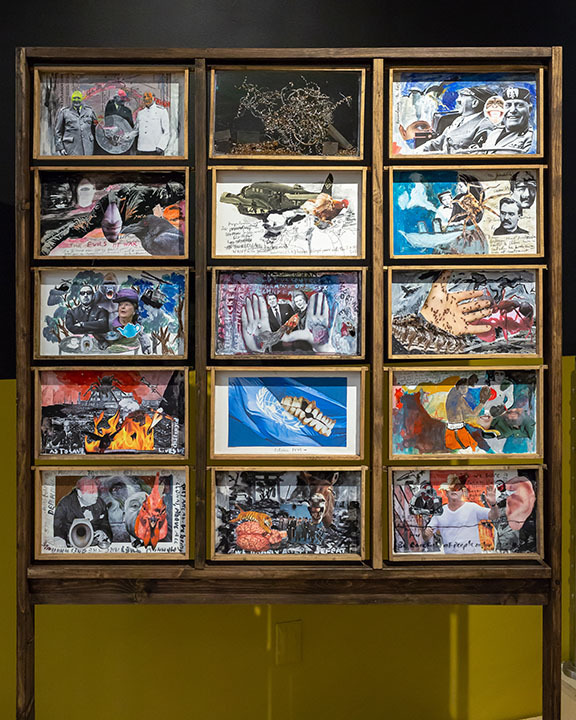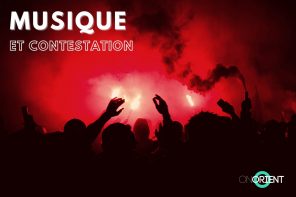Anna Boghiguian is an armenian artist born in 1946 and living in Cairo. Last August, her exhibition at the New Museum of Contemporary Art in New York untitled The Loom of History, combined raw and expressionistic works paintings, expressing her statements on politics, philosophy, and myths, between the past and the present.
Anna Boghiguian grew up in Cairo in 1946 and is the granddaughter of survivors of the Armenian Genocide. As a young adult, she studied political science and the writings of philosophers like Nietzsche who is known for exploring the dichotomy between order and disorder, represented by the two Greek gods. Later, in 1980, she started her journey in art. Her curiosity lead her around the world, documenting her experiences as a foreigner and an outsider by researches, notes and drawings. Since then, she has focused her interests on how history has affected the present, and has immersed herself in themes of power, war, displacement and oppression.
In her exhibition “The Loom of History” at the New Museum, Anna Boghiguian connects past events and present conflicts. Her works draws lines between past dictators and today’s populist leaders, and addresses the economics of the cotton trade and its fundamental relationship to slavery in the United States, which has shaped the current racial inequalities. This way, she explores the binary relationship between the rational logic and the emotional chaos existing in history and contemporary politics.
Her show brings together a selection of recent cutout paper figures, mixed-media works on paper, collaged paintings in beehive frames, large-scale painted sailcloth, and hand-painted texts on the gallery wall. The colors are bold and the compositions saturated, creating a symbolic feeling of overwhelming and a need to pick up and go.
The series of collages untitled ‘’In the World : East and West, North and South’’ are displayed in dense three-by-five part grids, which are a touchstone of her largely portable oeuvre. They appear as an exploded film script which power is in part due to their hyper intuitive and quick condemnations. In fact, Boghiguian’s collages appropriate political photographs and mass media visual ephemera. She combines them with images of wild-eyed animals, fire, and Hitchcockian villains. The results are both funny and very frightening. One collage includes an image of U.S. president Donald Trump’s screaming face next to the wide-open, smiling maw of a monkey. A witness to absurdity. Another is a nod to a 1998 event when the British prime minister Margaret Thatcher invited the Chilean dicator Augusto Pinochet for tea. But this time, a gorilla joins them at a table set with two cups and a dirty toilet.
Elsewhere, Anna Boghiguian shows the revolutionaries who have repeatedly risen up against the agents of oppression. The painted cutouts that call to mind Javanese shadow puppets are arranged across the floor of the exhibition. Held in place by wooden sticks, they show groups of slaves, plantation workers, soldiers and arriving immigrants marching in protest. One figure has a massive ear while another opens his mouth wide in protest.
Ears, brains and mouths recur across the artist’s body of work. They are used to represent the importance of keep listening and questioning in a world where information can be translated in different ways depending on perspective, context, and agenda. Through these micro and macro perspectives, we as visitors are engaged : it is up to us to listen and to care.










